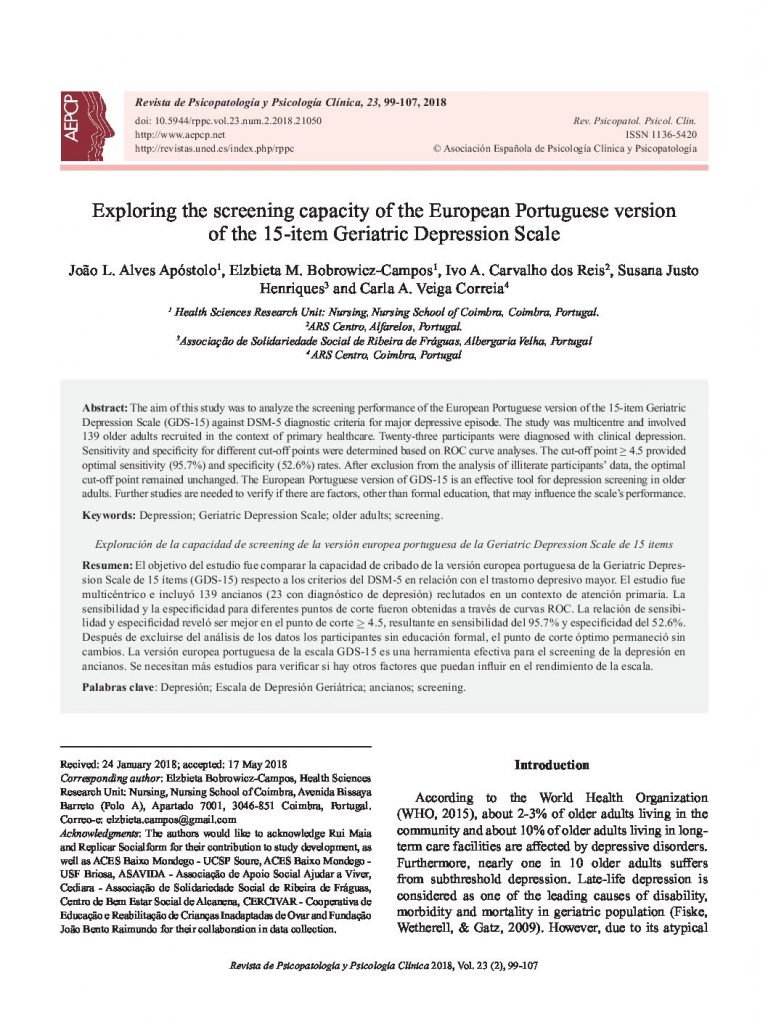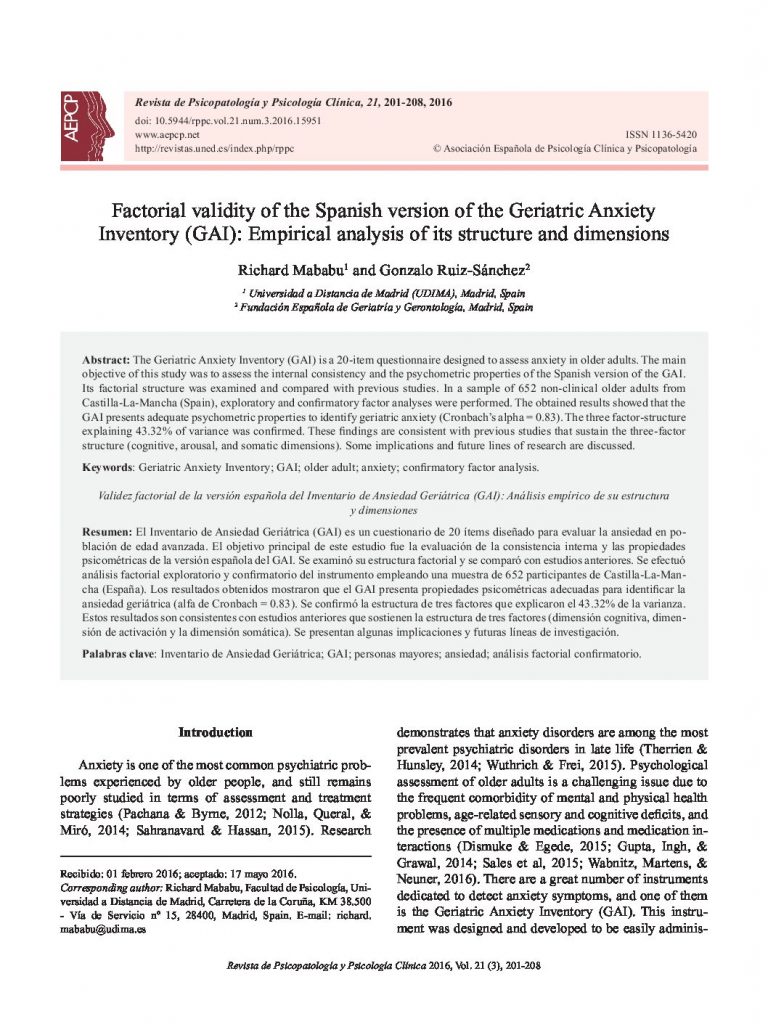Exploring the screening capacity of the European Portuguese version of the 15-item Geriatric Depression Scale.

- Reconocimiento de expresión facial emocional en el trastorno de déficit de atención e hiperactividad en la infancia.
- Calidad de vida en personas diagnosticadas con trastorno de personalidad límite: Papel mediador de la satisfacción vital.
- Exploring the screening capacity of the European Portuguese version of the 15-item Geriatric Depression Scale.
- Invarianza factorial y temporal de una versión española del Cuestionario de Regulación Emocional ERQ.
- Estudio de validación del Cuestionario de Afrontamiento del Estrés en personas trans de México.
- El carácter transdiagnóstico de las intrusiones mentales: Una revisión y una propuesta basada en datos.
- Impacto de la autopresentación perfeccionista en la salud infantil y adolescente: Una revisión sistemática.
The aim of this study was to analyze the screening performance of the European Portuguese version of the 15-item Geriatric Depression Scale (GDS-15) against DSM-5 diagnostic criteria for major depressive episode. The study was multicentre and involved 139 older adults recruited in the context of primary healthcare. Twenty-three participants were diagnosed with clinical depression. Sensitivity and specificity for different cut-off points were determined based on ROC curve analyses. The cut-off point ≥ 4.5 provided optimal sensitivity (95.7%) and specificity (52.6%) rates. After exclusion from the analysis of illiterate participants’ data, the optimal cut-off point remained unchanged. The European Portuguese version of GDS-15 is an effective tool for depression screening in older adults. Further studies are needed to verify if there are factors, other than formal education, that may influence the scale’s performance.
El objetivo del estudio fue comparar la capacidad de cribado de la versión europea portuguesa de la 15-item Geriatric Depression Scale (GDS-15) respecto a los criterios del DSM-5 en relación con el trastorno depresivo mayor. El estudio fue multicéntrico e incluyó 139 ancianos (23 con diagnóstico de depresión) reclutados en un contexto de atención primaria. La sensibilidad y la especificidad para diferentes puntos de corte fueron obtenidas a través de curvas ROC. La relación de sensibilidad y especificidad reveló ser mejor en el punto de corte ≥ 4.5, resultante en sensibilidad del 95.7% y especificidad del 52.6%. Después de excluirse del análisis de los datos los participantes sin educación formal, el punto de corte óptimo permaneció sin cambios. La versión europea portuguesa de la escala GDS-15 es una herramienta efectiva para el screening de la depresión en ancianos. Se necesitan más estudios para verificar si hay otros factores que puedan influir en el rendimiento de la escala.




